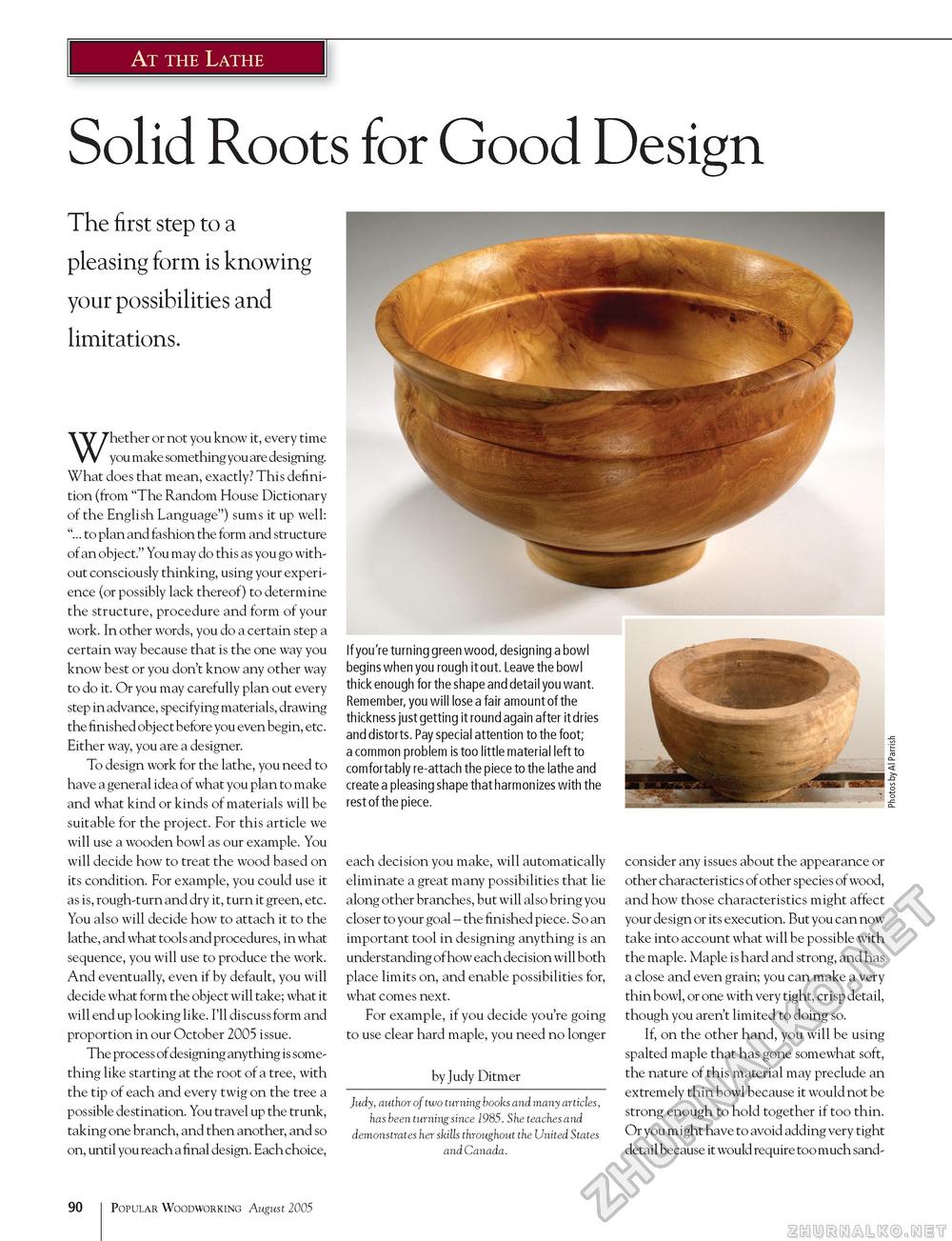Popular Woodworking 2005-08 № 149, страница 92
At the Lathe Solid Roots tor Good DesignThe first step to a pleasing form is knowing your possibilities and limitations. Whether or not you know it, every time you make something you are designing. What does that mean, exactly? This definition (from "The Random House Dictionary ot the English Language") sums it up well: "... to plan and fashion the form and structure ot an object." You may do this as you go without consciously thinking, using your experience (or possibly lack thereof) to determine the structure, procedure and torm ot your work. In other words, you do a certain step a certain way because that is the one way you know best or you don't know any other way to do it. Or you may carefully plan out every step in advance, specifying materials, drawing the finished object before you even begin, etc. Either way, you are a designer. To design work for the lathe, you need to have a general idea of what you plan to make and what kind or kinds of materials will be suitable for the project. For this article we will use a wooden bowl as our example. You will decide how to treat the wood based on its condition. For example, you could use it as is, rough-turn and dry it, turn it green, etc. You also will decide how to attach it to the lathe, and what tools and procedures, in what sequence, you will use to produce the work. And eventually, even if by default, you will decide what form the object will take; what it will end up looking like. I'll discuss form and proportion in our October 2005 issue. The process of designing anything is something like starting at the root of a tree, with the tip of each and every twig on the tree a possible destination. You travel up the trunk, taking one branch, and then another, and so on, until you reach a final design. Each choice, If you're turning green wood, designing a bowl begins when you rough it out. Leave the bowl thick enough for the shape and detail you want. Remember, you will lose a fair amount of the thickness just getting it round again after it dries and distorts. Pay special attention to the foot; a common problem is too little material left to comfortably re-attach the piece to the lathe and create a pleasing shape that harmonizes with the rest of the piece. each decision you make, will automatically eliminate a great many possibilities that lie along other branches, but will also bring you closer to your goal - the finished piece. So an important tool in designing anything is an understanding ofhow each decision will both place limits on, and enable possibilities for, what comes next. For example, if you decide you're going to use clear hard maple, you need no longer ■ by Judy Ditmer Judy, author of two turning books and many articles, has been turning since 1985. She teaches and demonstrates her skills throughout the United States and Canada. consider any issues about the appearance or other characteristics of other species of wood, and how those characteristics might affect your de sign or its execution. But you can now take into account what will be possible with the maple. Maple is hard and strong, and has a close and even grain; you can make a very thin bowl, or one with very tight, crisp detail, though you aren't limited to doing so. If, on the other hand, you will be using spalted maple that has gone somewhat soft, the nature of this material may preclude an extremely thin bowl because it would not be strong enough to hold together if too thin. Or you might have to avoid adding very tight detail because it would require too much sand 90 Popular Woodworking August 2005 |








